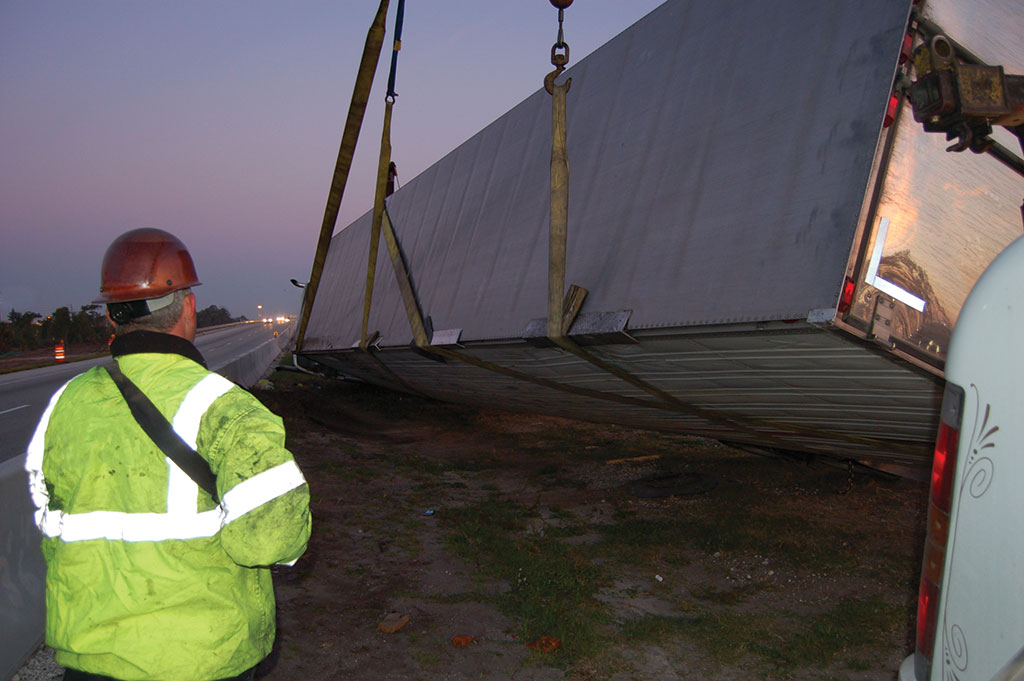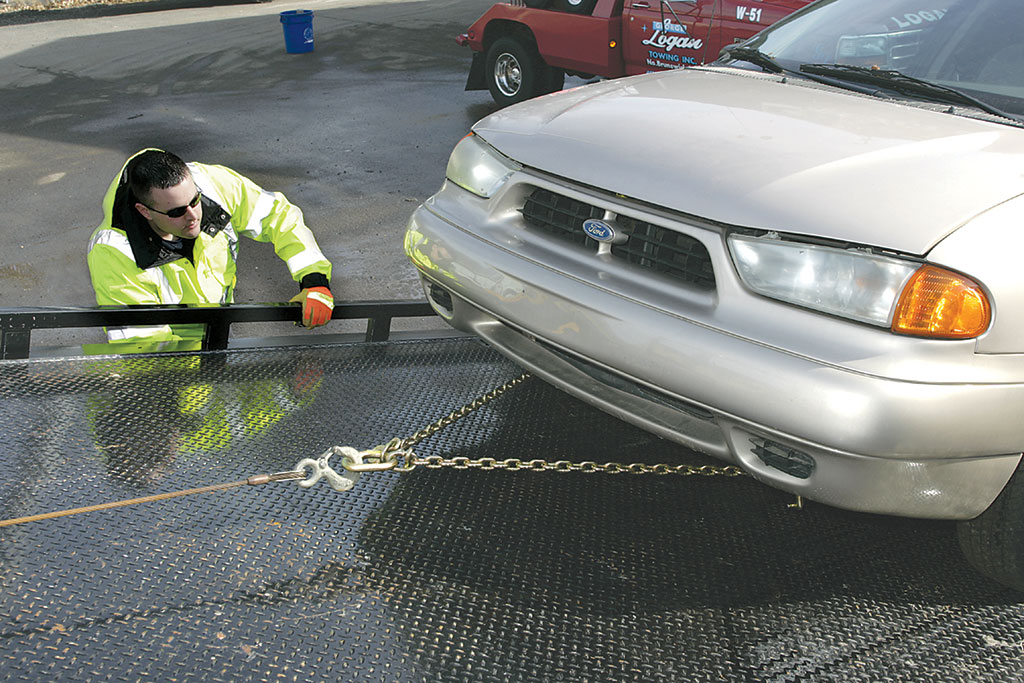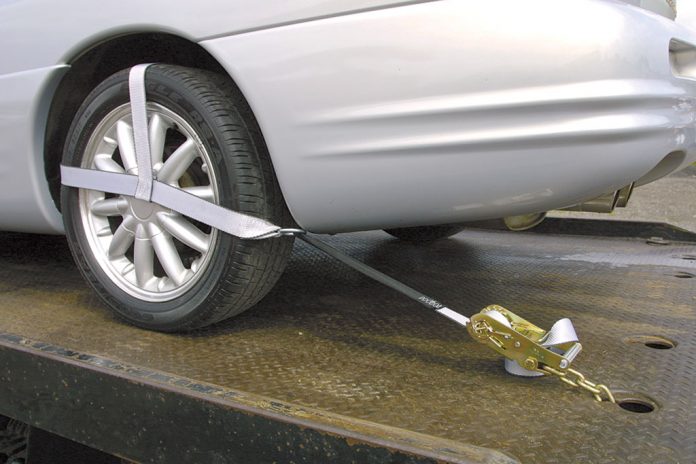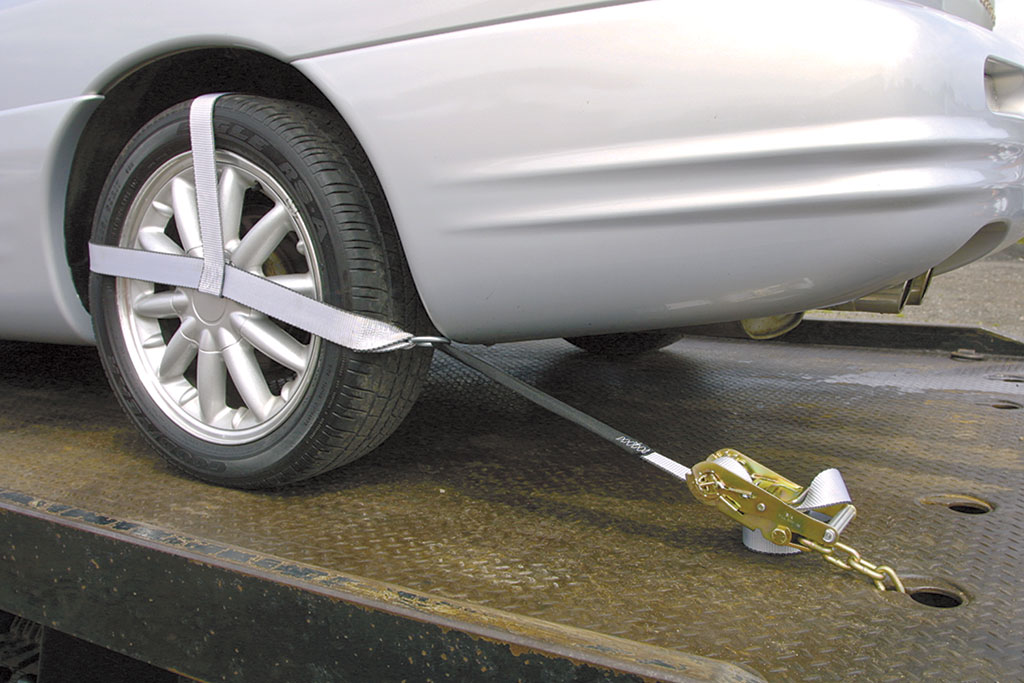
By Simon Birch
This month, we are going to discuss straps and chains. We will cover their uses and applications, ratings and sizes, and care and maintenance.
STRAPS

Nylon or Polyester straps have become the industry standard over the last decade or so. They are available in as many different shapes, sizes and configurations as you can think up, and most strap manufacturers have the ability to custom produce straps for any application.
They are being used on every size and style of towing and recovery vehicle, from the smallest wheel lift to the largest rotator. We are using straps to secure vehicles to our trucks, winch vehicles from ditches and wrap around over turned vehicles to upright them, all without incurring any further damage to the casualty.
The benefits of using straps over chains in many situations are numerous.
Since straps are lighter and easier to handle, strain on the operator is reduced. They can be used in many situations where chains would cause damage, like during recoveries when the chain would be up against the side of the vehicle, potentially cutting into the vehicle or scratching the painted surfaces. Straps can also be fed into locations that chains could never fit.
As the design of the automobile has progressed, many manufacturers are omitting tie- down slots and replacing steel or cast suspension parts with lightweight, stamped pieces, which can be very susceptible to damage if hooked onto. In response, strap kits have been developed to secure vehicles to the transporting truck by its wheels and tires, thus eliminating any body or chain contact.
These tie-down strap kits are available in many configurations, including 4-point over the wheel, 4-point through the wheel and 8-point over the wheel. They can be paired with almost any size and style of ratchet or custom ordered to fit the operator’s specific needs and requirements. The use of these tie-down straps has now expanded to the auto hauler industry, as operators that are transporting new cars to dealerships from factories and sea ports are being faced with the same challenges of securing the vehicles to their haulers as the towing operators are.
When it comes to vehicle recovery, few can argue the benefits of straps and web slings. For years now, heavy duty operators have been using 6, 8 or even 12 inch wide straps to support, lift and catch trucks and trailers that have overturned, run off the road or been involved in an accident. Often used in conjunction with Air Cushions, these have become an integral piece of equipment in every heavy duty recovery fleet. Now, with the increasing presence of large rotator recovery vehicles, these recovery straps are helping operators perform complicated jobs that in the past would have taken much longer, and used more trucks and operators.
The arrival of endless loops or round slings has also added to the “tool box”. These synthetic polyester, continuous loops are available in a multitude of lengths and strengths, depending on their usage, and are a perfect complement to the recovery straps already discussed. These are lightweight, washable and very flexible and are being used in all types of recovery situations, both large and small.
CHAINS

Although the development of recovery straps has led to them replacing chain in many applications, chain still plays a very important role in our industry. Graded by strength and available in many sizes, there is a chain available for every task.
Grade 70 is now regarded as the minimum grade for transport and towing applications. V bridles, light duty tie down chains and safety chains are almost always Grade 70, but grade 40 is still available if preferred.

Recovery work should only be performed with a Grade 80 or higher chain, and, depending on the task and equipment, can be sized anywhere from 5/16 to 5/8. Most heavy towing and recovery operators are using Grade 100 or 120, in ½ inch or higher, as their standard for recovery work, with Grade 80 being used for tie downs or securing axles, drivetrains etc.
One thing to pay note to is that you should always pair your chain with the same grade hardware and hooks. Installing a Grade 70 hook on a Grade 100 chain will render that entire assembly Grade 70. The weakest link is always the item with the lowest grade.
Chain maintenance is often overlooked, and, as a result, failure can occur when you least expect it. Keep your chains clean, and inspect your chains for flat spots, cracks and link failures on a regular basis, and they will last for a very long time.
Simon Birch, Technical Support, AW Direct








